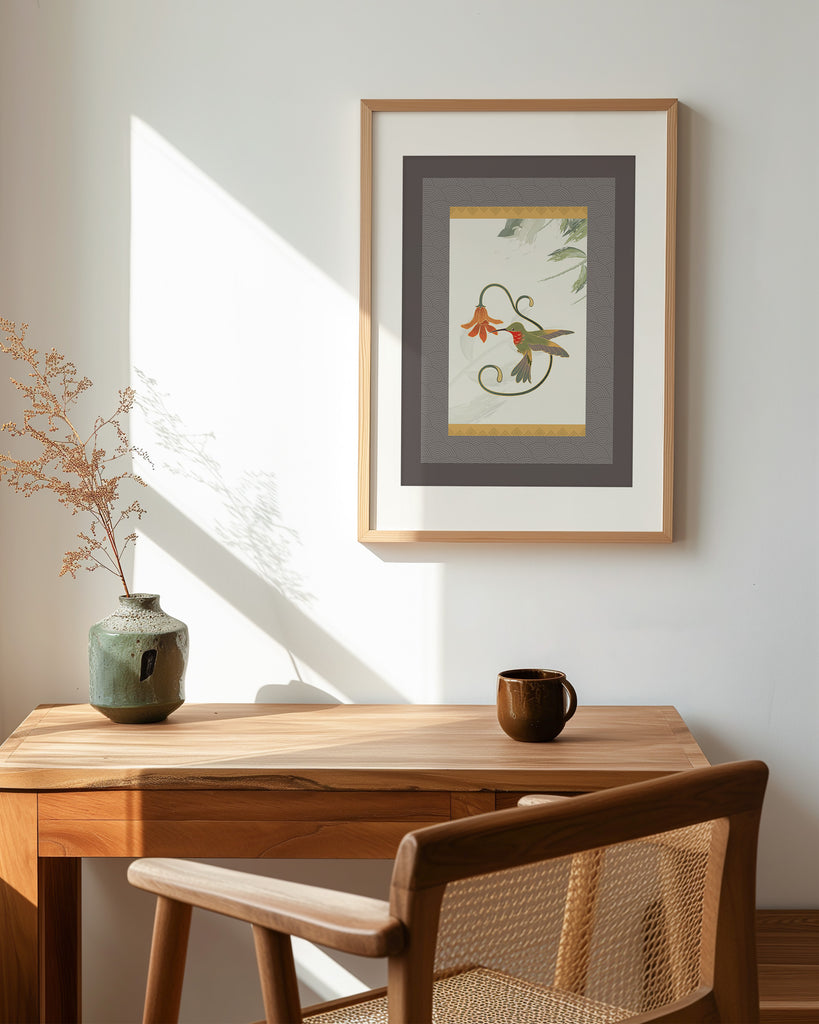The Inspiration Behind "Native Hummingbird on Japanese Hanging Scroll Wall Art"


As a Japanese artist working with some Native Americans, I have uncovered profound connections between our cultures, particularly in our views and relationships with nature and the spiritual world. Both cultures exhibit a deep reverence for the earth and its creatures, not merely viewing them as components of the ecosystem, but as essential parts of our spiritual existence.
This mutual respect inspired me to create "Native Hummingbird on Japanese Hanging Scroll Wall Art." In many Native American traditions, the hummingbird is a revered symbol of joy, resilience, and adaptability—qualities that deeply resonate within both our cultures. The hanging scroll in Japanese art provides a dynamic, retro-meets-modern canvas that captures the hummingbird's graceful and purposeful movements.
By merging these elements, my aim was to encapsulate the essence of both Native American and Japanese art forms. The hanging scroll embodies the elegance and contemplative nature of Japanese aesthetics, providing a tranquil backdrop to the vibrant and spiritually meaningful Native American hummingbird.
This artwork is more than just a decorative piece; it serves as a cultural bridge, celebrating the differences and similarities that enrich our communities. It is a collaboration that speaks to the core of what art represents—transcending boundaries and conveying universal themes that resonate with everyone.
Through "Native Hummingbird on Japanese Hanging Scrolls," my hope is to foster greater appreciation and understanding between these two rich cultures, showcasing the beauty that emerges when diverse worlds come together through art. This work stands as a testament to the powerful connections that art can forge, uniting different traditions in a celebration of shared values and mutual respect, and ultimately highlighting how art can be a profound medium for cultural exchange and understanding.
Kakejiku ( Japanese Hanging Scroll )
Kakejiku, also known as kakemono, refers to a Japanese hanging scroll that is used for displaying and appreciating paintings, calligraphy, and other artworks. These scrolls are typically made of silk or paper, mounted with fabric borders, and are hung vertically, often within a tokonoma (alcove) in traditional Japanese rooms. The kakejiku format is an integral part of Japanese interior decoration and is especially prominent in settings related to tea ceremonies, where the selection and placement of a scroll reflect the host's aesthetic sense and the season or occasion.
The art displayed on a kakejiku can vary widely, from intricate ink paintings and detailed landscapes to bold calligraphic strokes or poetic haiku. The top and bottom of the scroll have rollers (known as jikugi) which help in rolling up the scroll for storage. The flexibility of the kakejiku allows it to be changed according to the season or the specific tastes of those viewing it, making it a dynamic part of Japanese cultural life.
The kakejiku has a long history in Japan, influenced by earlier Chinese practices of scroll making. It embodies the principles of wabi-sabi, the acceptance of transience and imperfection, and serves not only as a home decoration but also as a focus for reflection and a deep appreciation of art.


Leave a comment